When LaGuardia #1 from Dark Horse/Berger Books hits shelves next Wednesday, readers will encounter a new story set in the same universe as best-selling author Nnedi Okorafor’s Hugo and Nebula Award-winning novella series, Binti. Set hundreds of years in the future in a world where aliens have come to Earth and integrated with human society, LaGuardia follows pregnant Nigerian-American doctor, Future Nwafor Chukwuebuka, who returns to New York City from Lagos with an illegal alien plant named “Letme Live” smuggled in her luggage.
When Future arrives at her grandmother’s tenement, the New Hope Apartments in the South Bronx, she and Letme become part of a growing population of mostly African and shape-shifting alien immigrants already living in the building. In trying to survive together in the U.S., Future, Letme and others are forced to battle travel bans, discrimination and interrogation. As her pregnancy progresses, Future begins to change and the secrets she hides are brought to light.
LaGuardia‘s release is particularly timely in the current sociopolitical environment in the U.S. Ahead of the first issue release, Okorafor and artist Tana Ford answered questions about the series, including its inspiration, its characters, and its world-building for The Beat.
Samantha Puc: What can you tell our readers regarding the world-building in LaGuardia? How much of the process was collaborative and how much was already laid out prior to scripting, illustrating, coloring and lettering the story?
Tana Ford: Comics work best when they are a full-on collaborative effort. Nnedi creates universes with her words: wild, transformative realities that I do my very best to bring to life in the line work. James adds dimensionality and mood with his brilliant coloring, and the letters and sound effects make our story come alive in the mind of our reader.
So, the entire process is collaborative, but there was a real sense, for me, of a world emerging as the pages began to come together in issue one. I knew that we wanted a universe that felt familiar yet futuristic: Self-driving cars (not flying cars), sleek tablets and huge holographic projections, but also brick and mortar schools and paved roads.
In LaGuardia, I will often get notes about the kind of alien lifeforms Nnedi would like to see in the background — in this case, the Sea Sheep are real Earth creatures that we are repurposing as alien people. This is a thing we do often — you will see giant bat people, walking sticks, ostentatious spider creatures scrolling through their smartphones while they wait in line. It’s tons of fun.
As far a world being laid out prior to scripting, I knew that this world was in the same universe in which Nnedi’s Binti series takes place (Binti exists several hundred years in the future), so I listened to those audiobooks as I designed things and reveled in how meta (and cool!) creation can be.
Puc: How much research went into creating this story? Other than Trump’s travel ban, which you mention in your afterword, were there specific current or historical events that you attempted to incorporate into the timeline?
Nnedi Okorafor: I’ve been kicking this story around for 7 or 8 years. So, issues of immigration have been on my mind much longer than Trump’s travel ban. His ban is just a peak in the escalating problem of America’s xenophobia. I’m the child of immigrants, and thus issues of immigration are a part of my creative and literal DNA.
There is the complex subject of Biafra that I gently touched on in the series. The ghost of Nigeria’s Biafran Civil War and the spirit of Biafra still haunts Nigerians to this day and it will in the future when aliens arrive and join humanity. I wouldn’t call my knowledge of Biafra and the civil war “research” because I’m Igbo and Nigerian (and some would say, “a Biafran”). Like issues of immigration, Biafra and the Nigerian Civil War are part of my life.
I research the layout of Lagos, Brooklyn (there was so much detail that never made it into the book), body scanners, and the theater of the TSA … though that was initially out of personal interest. I needed to know what the deal was with those scanners and my hair. I was constantly getting pulled aside for rather invasive searches of my long dreadlocks. I learned that those scanners have problems with dense matter, so overweight people and, well, black women with a lot of hair (our hair is often on the dense side when we grow it out) tend to have problems.
All in all, most of the “research” I did for this series was driven by me living my life and wanting to know; it was driven by me just being me.
Tana Ford: I did a lot of visual research examining modern architecture, watched videos speculating on the buildings of the future, on Lagos as it is today, green energy cars, drone design, futuristic city landscape. While some of that made it into the book, there is only so much room I have to work with, page by page.
I am pleased with how future Lagos turned out in issue #1; we’ve got bridges and water and a round-about that mirrors a park, but I do wish Brooklyn looked more futuristic. Part of the problem is that I backed myself into a corner by making the New Hope Apartments texturally interesting with lots of wood and brick and glass, but I wonder if I’ve gone too classic? New Hope should feel warm and inviting, but if that charm leaves the reader feeling like Brooklyn is behind the rest of the world technologically, then I haven’t done what I set out to do.
Puc: Do you have a favorite character in LaGuardia? Who is it, and why are they your favorite?
Nnedi Okorafor: I love Future. And not because she looks like me, haha. By the way, that was just a natural part of the process. The inspiration for the story was me and my problems with the TSA, so when Tana drew her … she was “born” onto the page in my image. But she’s not me; I don’t flee from my problems, I face them. She’s one of my favorites in the story because she’s erratic, spontaneous, curious, kind of lost, but comfortable in all of it somehow. Letme Live is another of my favorites; it’s so melodramatic. Citizen, too … and Laundry … gah, I can’t choose.
Tana Ford: Letme is my fave because I love its personality — it’s melodramatic, whiny, sweet but sneaky, and also because it presents me with a wonderful art challenge. How do I make a shape-shifty, plant-based alien emote on the page? How do you draw a leaf that can act?
I wanted to get a very rubbery, animated feel to Letme Live throughout the book so I leaned heavily into drawing its tentacle-like vines, its ability to grow and shrink, and the emotion in its reflective black eyes.
My second favorite is Future. She is wonderful to draw in all sorts of ways and (keeping with the Binti inspiration) I tried to make her hair as dynamic as I could in every panel.
Puc: Do you have a favorite panel in the first issue? Can you describe why that one stands out to you in particular?
Nnedi Okorafor: The panel where Letme Live opens the window and proclaims its name to New York, as they drive down the freeway in a self-driven car. I just love that image and moment. Letme Live is an illegal alien alien (he’s been smuggled into the US) who’s just come from the biggest city in Africa (Lagos) and is now the biggest city in North America. Future is beside it, grinning. The wind is blowing, so the moment is visually kinetic. I just love it.
Tana Ford: Yes! On page 26 we have a purely comedic moment where Letme and Future are effortlessly called out by Grandma Obioma, and their faces are so extra it actually makes me laugh.
Puc: From the artistic perspective, what type of creative challenges and opportunities did LaGuardia present?
Tana Ford: I deeply enjoy world building and design, which makes working on LaGuardia a dream come true for me. I’ve been able to experiment with background character design, texture and color, patterns and masks and clothing styles, alien species and self-watering plant pots. We have really run the gamut in this series, and it’s been delightful.
My guiding principle throughout has been to make my artwork as grounded in reality as I can. The magic of this world will be that it feels alive to the reader. This future is not unlike our own, yet it is a place where it’s not unusual to see a giant fish standing in line at the airport or to get bumped by a family of Alien Rabbits as you pick up your self-driving rental car. The blending of the real and the unreal is where the magic happens.
Puc: Is there anything else you’d like to add?
Nnedi Okorafor: This story is one of the strangest stories I’ve told to date. It’s not a dystopia or a utopia, it’s got its flaws, but it’s a world I’d love to see. A world where aliens have arrived and become Earthlings, not colonizers, exterminators or slaves … immigrants who bring ideas, wants, needs, problems, but even more solutions, who force humanity to rethink, reevaluate, and evolve. This was a joy to write. And working with Tana, she’s as creatively wild as I am. She took what I wrote and grew it into so much more. There were many times where I’d look at the pages she’d sent and just snicker with delight. The whole team for this has been absolutely incredible.
Tana Ford: I second that. LaGuardia has been a joy to illustrate. Future is just the kind of hero I want to see in comics: flawed but earnest, surprising and wonderful. I really feel for Citizen. And we have so many delightful supporting characters making their home in our human-centric corner of the universe. Being able to work on making a world like that come to life has been an incredible blessing.
LaGuardia #1 hits shelves on Dec. 5. Check out the cover below, as well as exclusive preview pages provided by Dark Horse. (Note: The first two pages were previously seen at Paste magazine, but are necessary for context.)


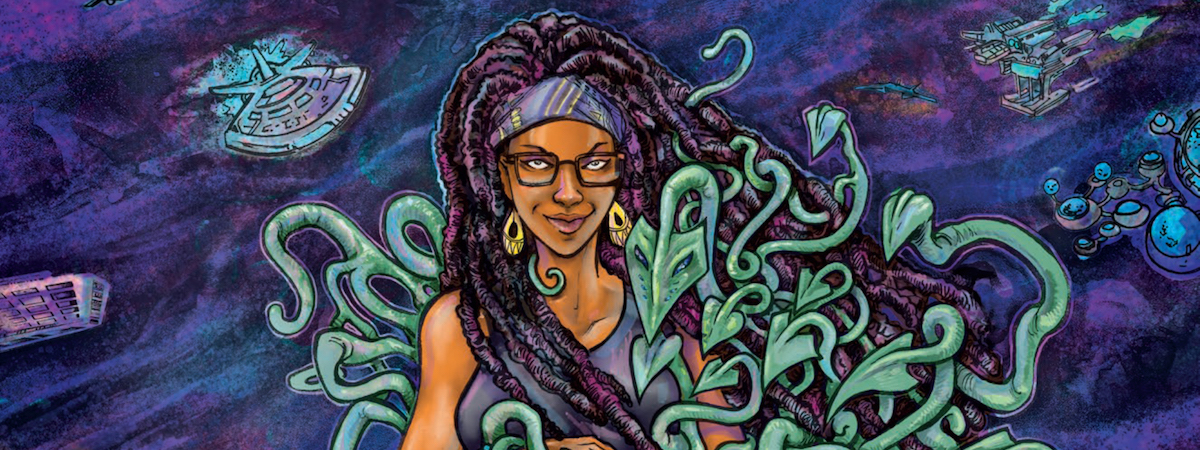
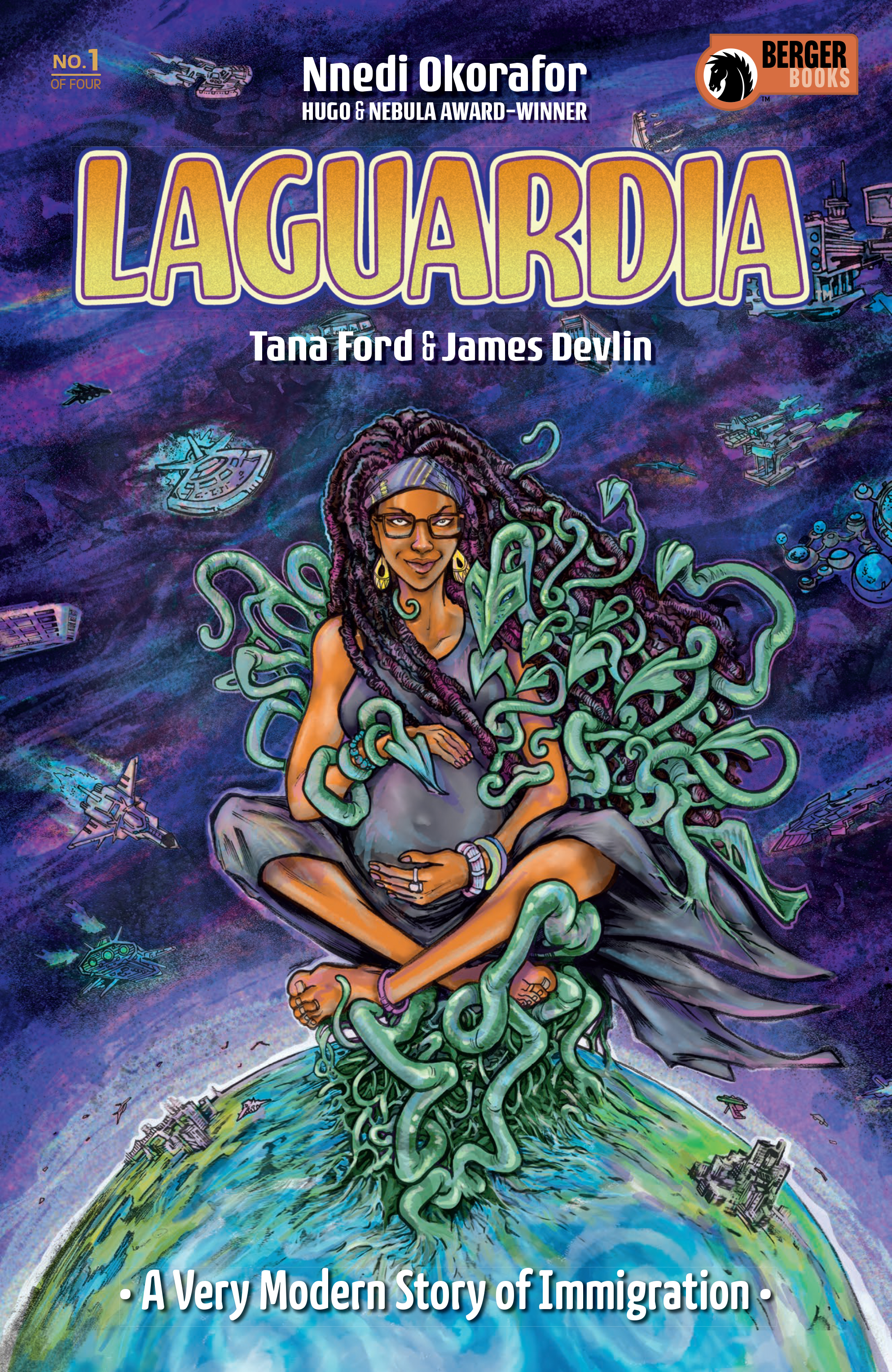
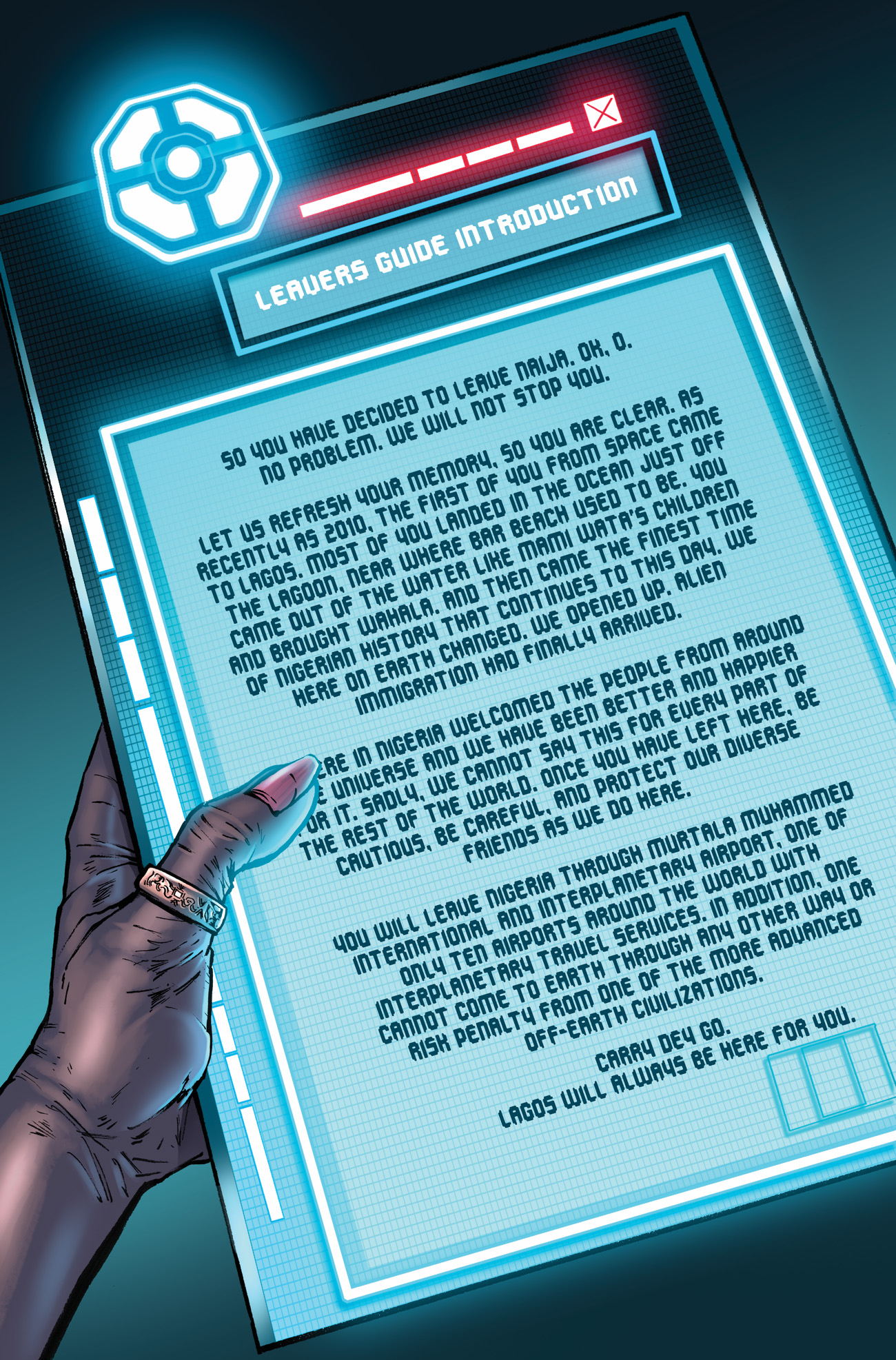
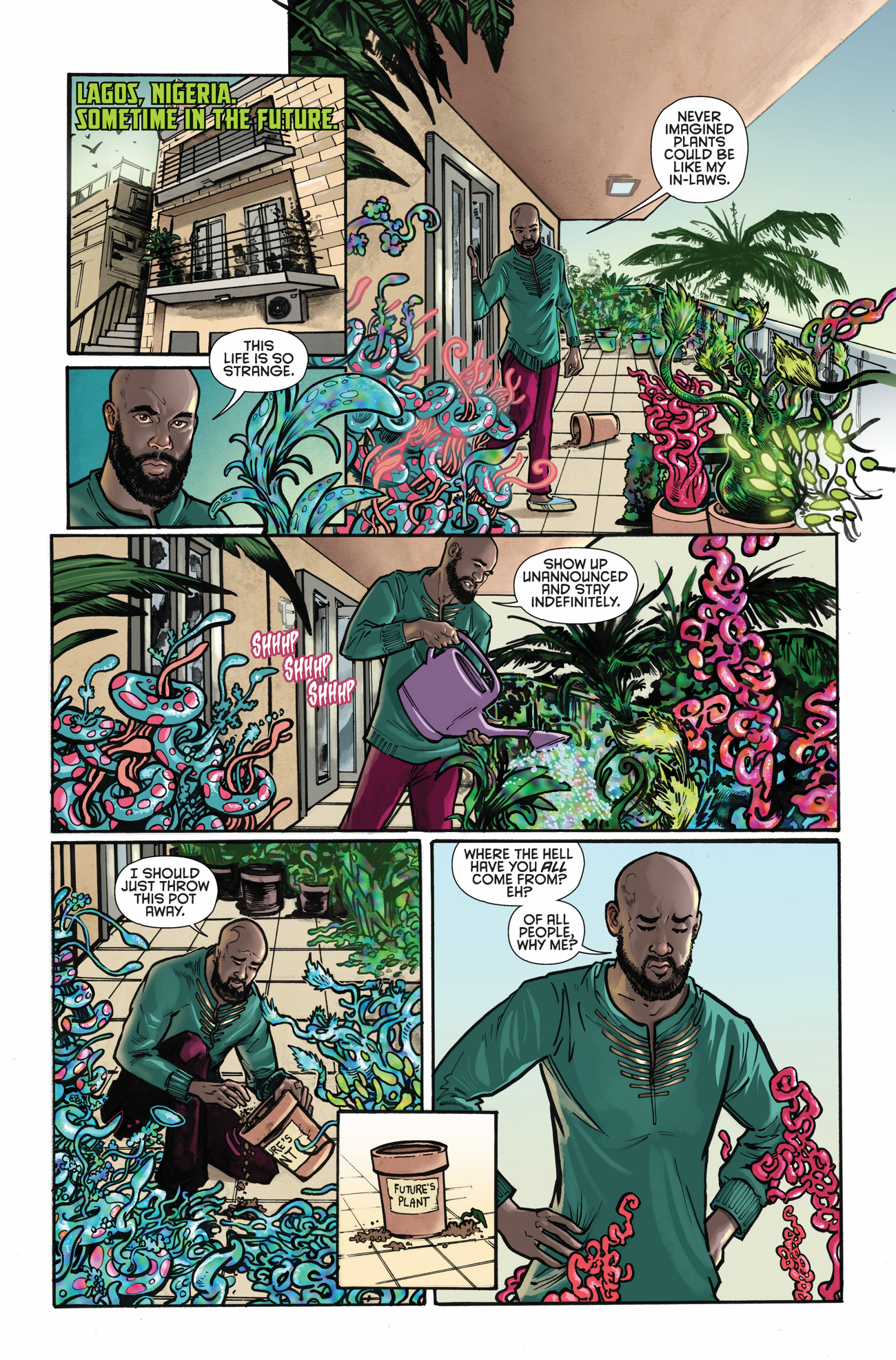
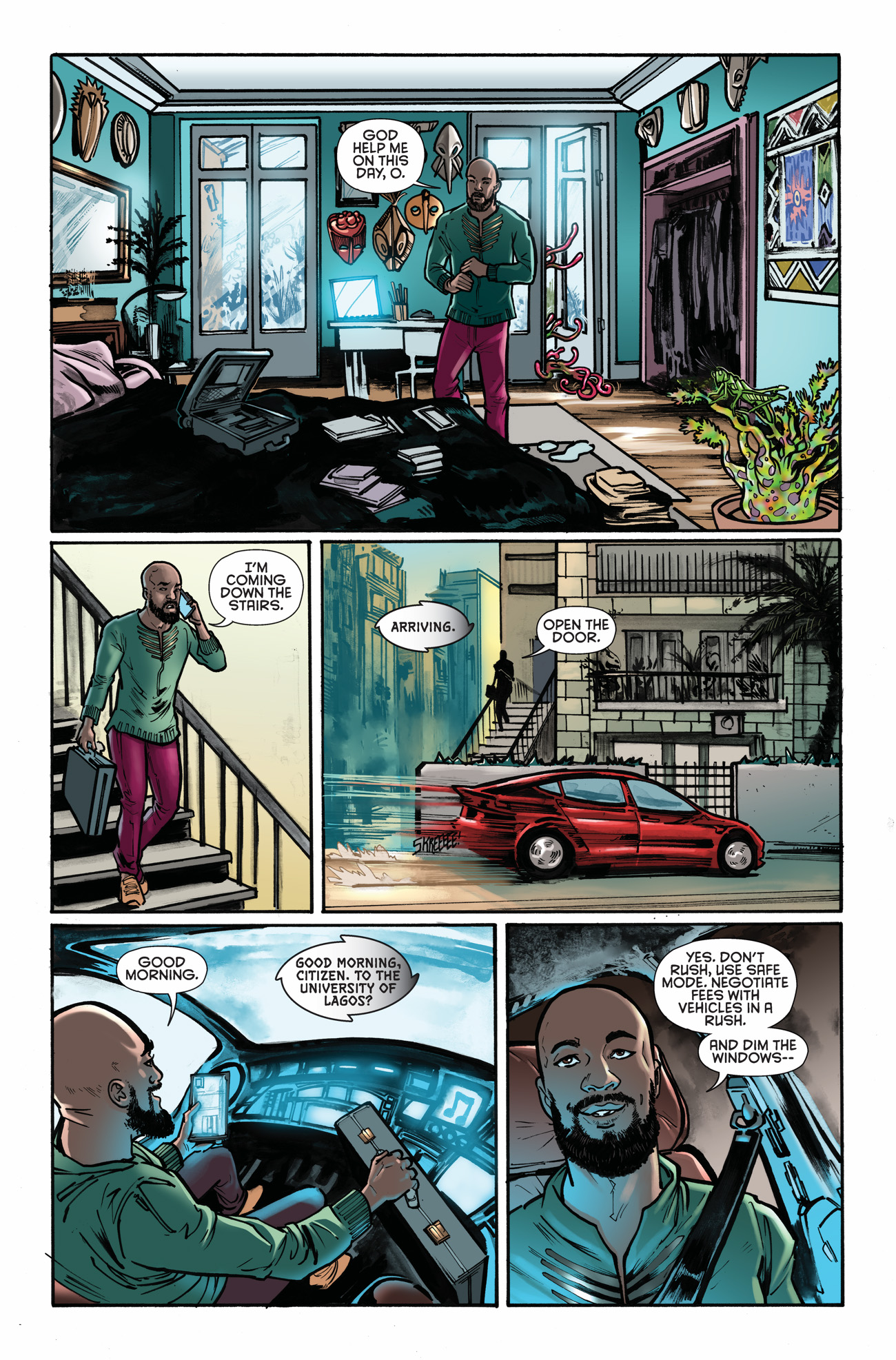
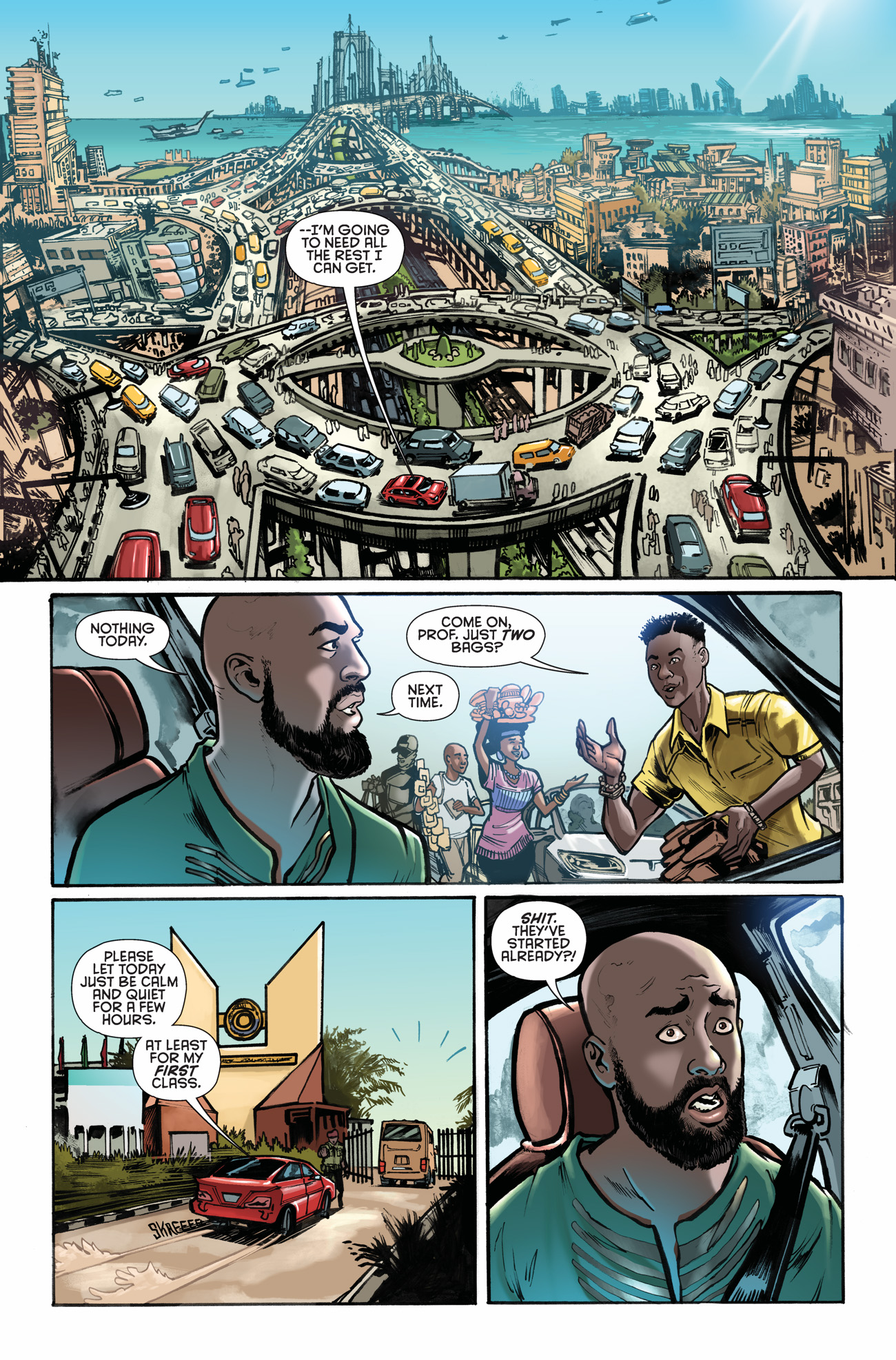
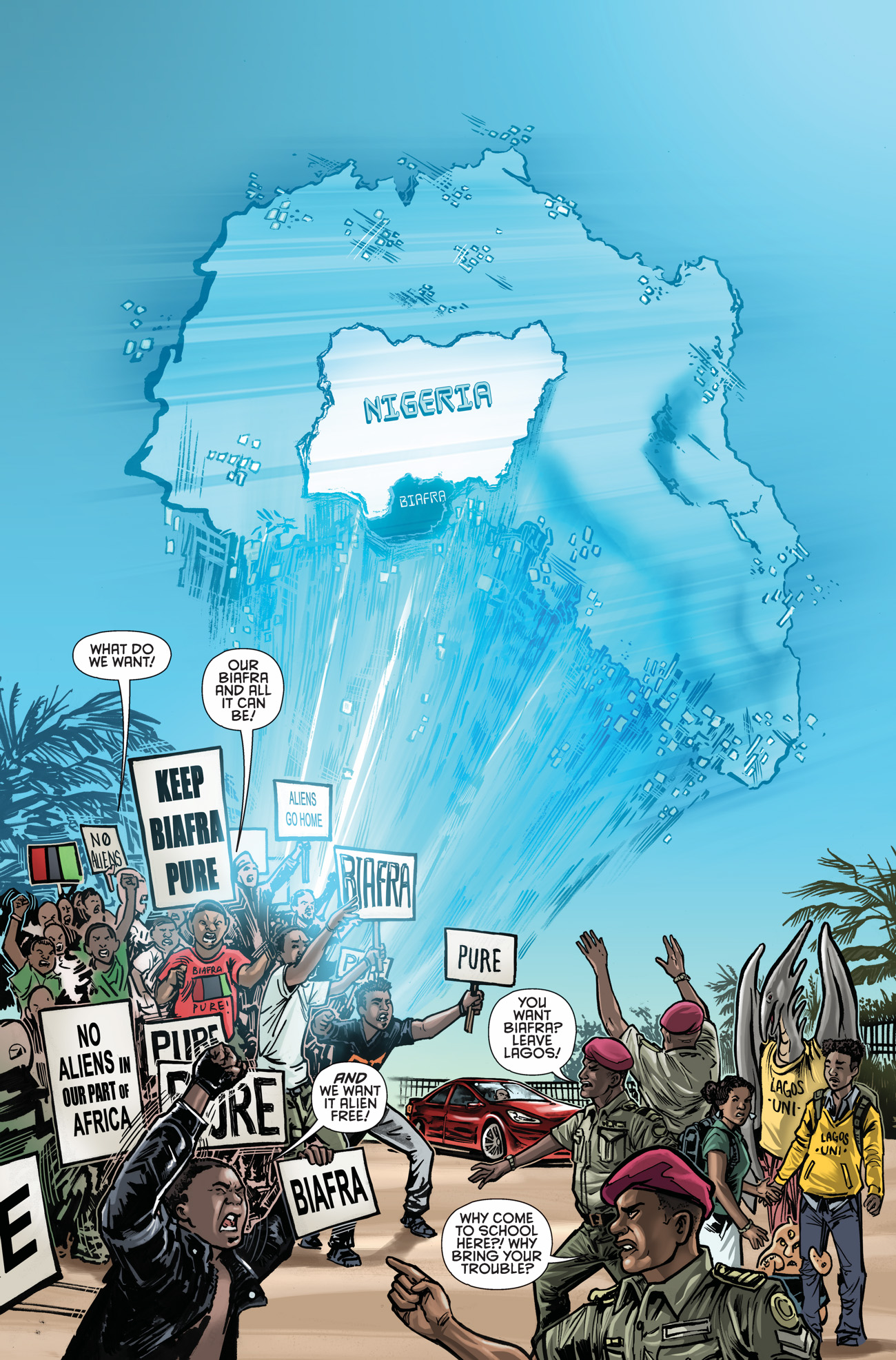

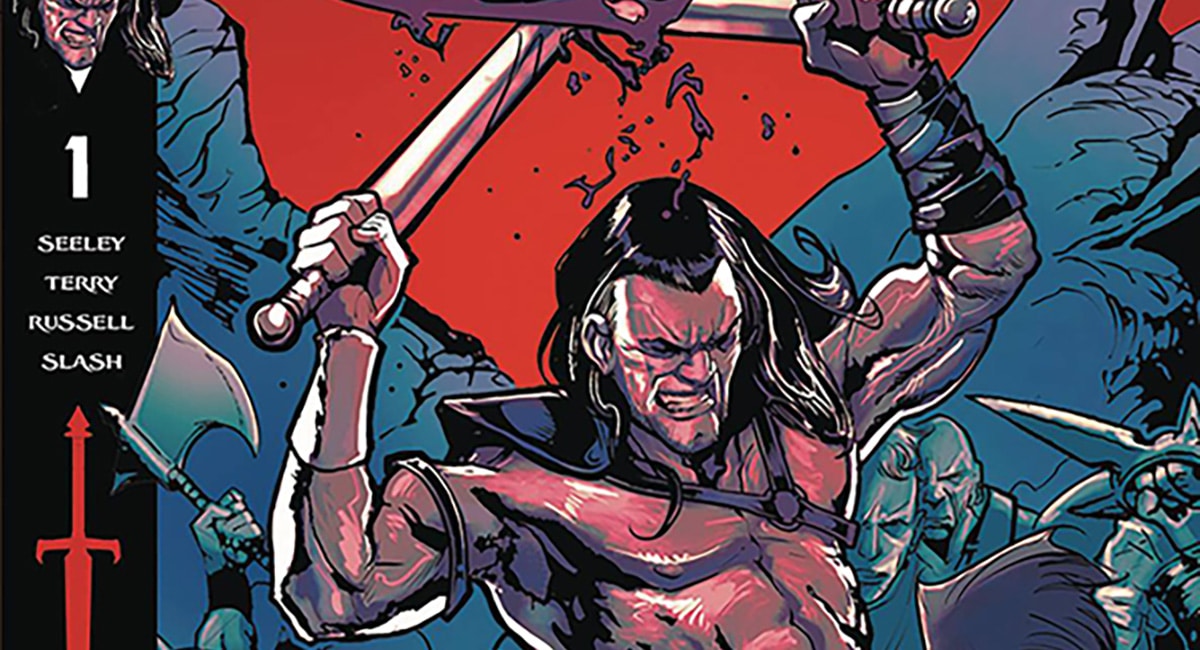



Cool.
Comments are closed.